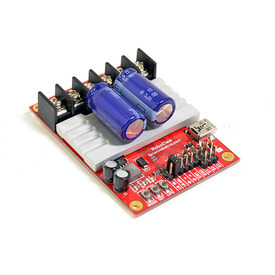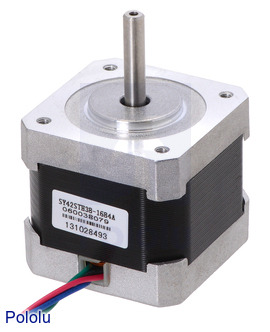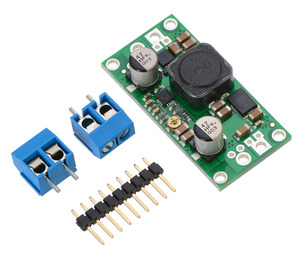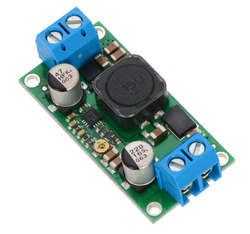Pololu Blog » Posts tagged “new products” »
Posts tagged “new products” (Page 29)
You are currently viewing a selection of posts from the Pololu Blog. You can also view all the posts.
Popular tags: community projects new products raspberry pi arduino more…
Now with USB: New RoboClaw 2x15A and 2x30A motor controllers
We’ve started selling USB versions of these two RoboClaw motor controllers from Orion Robotics:
|
|
These new RoboClaws add a USB serial interface to the other three control interfaces available (TTL serial, RC, and analog inputs), but are otherwise identical to the V4 RoboClaw 2×15A and 2×30A controllers that we previously offered. Like their predecessors, they can drive a pair of brushed DC motors with up to 15 A or 30 A, respectively, at voltages from 6 V to 34 V. Integrated dual quadrature decoders make it easy to create a closed-loop speed control system; analog feedback is also supported for closed-loop position control.
For an even wider range of current capability, the RoboClaw 2×5A Motor Controller (V4) and the RoboClaw 2×60A Motor Controller with USB (V4) are also available.
New NEMA 17 stepper motor with optional integrated lead screw
|
|
We have added a compact, powerful new NEMA 17-size stepper motor to our wide selection of stepper motors. This 42×38 mm stepper motor is available with a standard 5 mm D-shaft for general-purpose use, but perhaps more exciting is the version with a 28 cm threaded rod, which turns it into a linear actuator capable of precision open-loop position control. This latter version has the stainless steel lead screw built right into the stepper motor, so there is no need to deal with extra hardware such as shaft couplers and set screws, and the copper alloy traveling nut with mounting holes is included. Raise your next project to new heights with the precision (40 µm per full step) and control of a stepper motor!
 |
Please see the product pages for more information:
- Stepper Motor: Bipolar, 200 Steps/Rev, 42×38mm, 2.8V, 1.7 A/Phase
- Stepper Motor with 28cm Lead Screw: Bipolar, 200 Steps/Rev, 42×38mm, 2.8V, 1.7 A/Phase
For other options, you can take a look at our full selection of stepper motors.
New product: Adafruit Data Logging Shield for Arduino
 |
This data logger shield from Adafruit provides an easy way for your Arduino to save data so you can process and analyze it later. It accepts any SD card formatted with a FAT16 or FAT32 file system, and it includes a real-time clock (RTC) for accurate timestamping of your data. Lots of documentation and resources are available from Adafruit to help you get started with the shield.
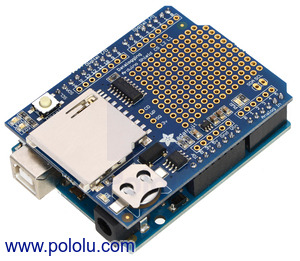 |
For more information, see the Adafruit Data Logging Shield for Arduino product page.
New product: 5V wall power adapter with USB port
Looking for a power supply for your Raspberry Pis, Arduinos, Wixels, or Maestro servo controllers? Look no further!
This UL-certified AC-to-DC converter gives you an easy way to deliver up to 1 A to your USB-powered device from a US-style AC electrical socket. It has been specifically designed to supply 5.25 V instead of 5 V to help ensure that the device it is powering receives close to 5 V even when the current draw is high. This converter is safe for use with USB-compliant devices.
This adapter does not include a USB cable, but it features a USB “A” port that you can plug a standard USB cable into, which makes it great for transitioning your project from USB to wall power.
For more information, see the 5V wall power adapter product page.
New product: Hydra Smart DC Power Supply
 |
The Hydra is a triple-output power converter from CH Robotics designed to make it easier to get the power you need for your next project. The Hydra can quickly give you access to three independent, software-configurable DC output voltages to power your system. The easy-to-use Smart Power Supply Control Software makes it quick and simple to configure and control the Hydra’s outputs from your computer via USB. Bench-top power supplies can be large and bulky, but the Hydra fits in the palm of your hand and can also be configured from a user-programmable microcontroller via serial. This flexibility makes the Hydra a great fit for a large variety of projects, whether you are building an industrial system or a small mobile robot.
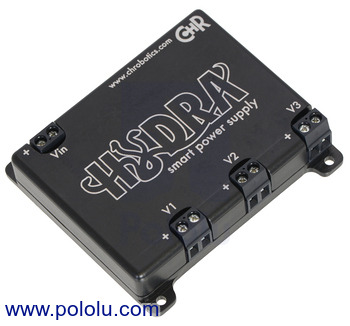 |
For more information, see the Hydra product page.
Free Elektor magazine January/February 2014
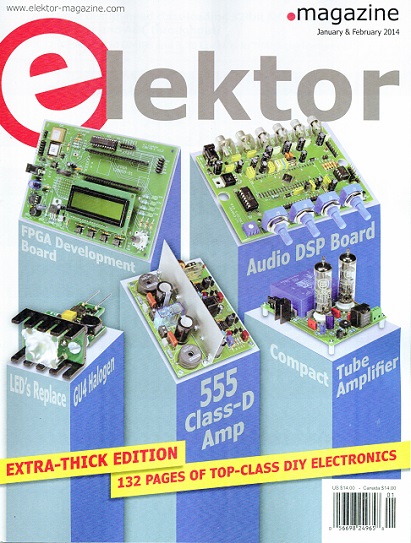 |
Get a FREE copy of Elektor magazine’s January/February issue with your order while supplies last. To get your free issue, enter the coupon code ELEKTOR0114 into your shopping cart. The magazine will add 8 ounces to the package weight when calculating your shipping options.
For other issues and more information, see our Free Elektor Magazine Offers page. All issues are now available for shipping worldwide!
New short-range analog Sharp distance sensor
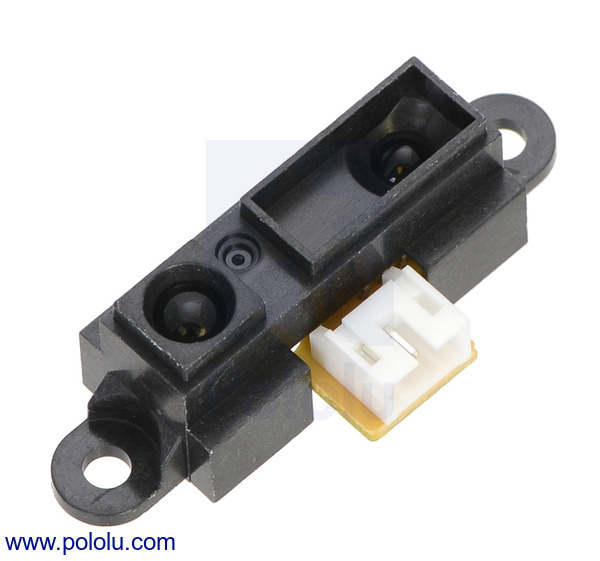 |
After having been out of the short-range Sharp GP2D120XJ00F analog distance sensor for a while, we are happy to have a higher-performance replacement: the Sharp GP2Y0A41SK0F analog distance sensor. The newer GP2Y0A41SK0F has the same physical dimensions, pinout, and 4 cm to 30 cm operating range as the original GP2D120XJ00F, but it offers a much higher update rate and lower average current draw. This sensor is an inexpensive and easy way to add close-proximity rangefinding or obstacle detection to your electronics or robotics project.
For longer-range analog rangefinders and shorter-range digital distance sensors, check out our full selection of optical rangefinders.
Powerful new S18v20x step-up/step-down regulators
 |
Earlier this month we introduced our new line of powerful U3V50x boost regulators; now we have a similarly powerful family of S18V20x step-up/step-down voltage regulators to go along with them! We are especially excited about these regulators, which have a wide 3 V to 30 V input voltage range, typical efficiency of 80% to 90%, and maximum output current of approximately 2 A when the input voltage is near the output voltage.
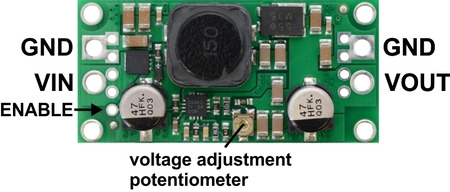 |
Step-up/step-down regulators like the S18V20x work with input voltages that are less than, equal to, or greater than the output voltage. This makes them especially well suited for battery-powered applications where the nominal battery voltage is close to the desired output voltage, and the actual battery voltage transitions from above the output to below as the battery discharges. For example, these regulators make it possible to get a steady 12V from a 12V battery or a steady 6V from five NiMH cells, which can be over 7 V when fully charged and below 5 V when drained. These regulators are also great for applications where having a very wide operating voltage range is desirable, such as projects where you want a lot of flexibility in power supply choice or in systems powered by alternative energy sources like solar or wind, where the output voltage can vary greatly.
The S18V20x family includes versions with fixed 5 V, 6 V, 9 V, or 12 V outputs and versions with adjustable 4 V to 12 V or 9 V to 30 V outputs. All of them feature built-in reverse-voltage protection, over-current protection, thermal shutdown, and an under-voltage lockout that keeps the modules from behaving erratically when the input voltage gets too low.
|
|
The compact boards (0.825″ × 1.7″) have four mounting holes for #2 or M2 screws and can be assembled with the included 5mm-pitch terminal blocks or 0.1″ header pins.
For other regulator options, you can take a look at our full selection of step-up/step-down regulators, step-up voltage regulators, and step-down voltage regulators.
New products: Vishay 38 kHz IR detector modules
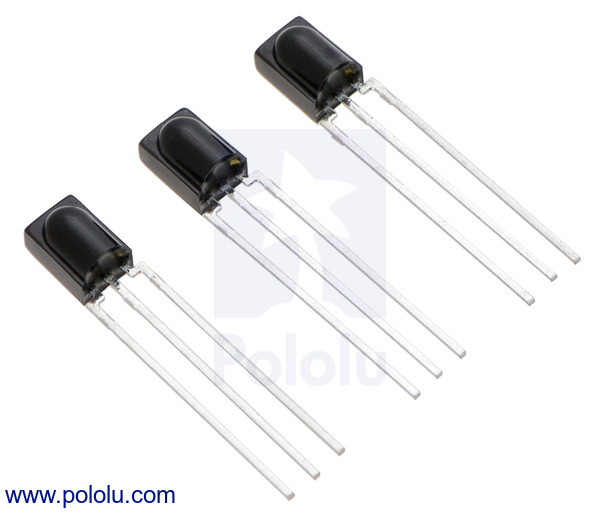 |
Modulated IR detectors typically used for remote control of household electronics have long been used in robot sensors because they are small, cheap, and very sensitive while still blocking out unwanted interference. However, part of what makes the modules so good for remote control is their complex automatic gain control (AGC) circuitry that adjusts the sensors’ sensitivity to ambient lighting conditions to give clean, digital outputs in a variety of environments. Unfortunately for those using the modules for other purposes, all of that magic is internal to the modules and leads to two shortcomings: we cannot know how strong the optical signal is because we do not know the gain value, and we cannot have consistent behavior because we cannot control how the AGC behaves.
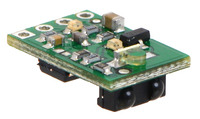 |
Pololu 38 kHz IR proximity sensor (original irs05a version). |
|---|
So, you can imagine how excited I was to find out about Vishay’s new IR modules designed specifically for sensor applications. They have two basic versions: one with a fixed gain that is constantly super-sensitive, and another one with a predictably-varying AGC that lets you know how bright the incident IR is. We used the fixed-gain units on the IR proximity sensors we released earlier this year, and we plan to make more products that use these unique sensors. In the meantime, we are happy to offer the through-hole versions of these sensors so you can start playing around with them to make your own sensor systems. Here are the two parts:
- The Vishay TSSP58038 has a fixed high gain setting, so it responds predictably and can detect a continuous modulated signal.
- The Vishay TSSP58P38 includes automatic gain control – but it is tuned to provide a usable measurement of the strength of the detected signal. When configured as a reflective proximity sensor, its output is a pulse with a width that depends almost linearly on the distance to the target.
Those IR proximity sensors I mentioned earlier work nicely with these new sensors since our boards include a high-brightness LED with a 38 kHz modulation circuit, so you can use several of those with these new IR detectors to make sophisticated sensing solutions in which you enable one emitter at a time and monitor the reflections with all the other sensors.
New product: I²C Long Distance Differential Extender
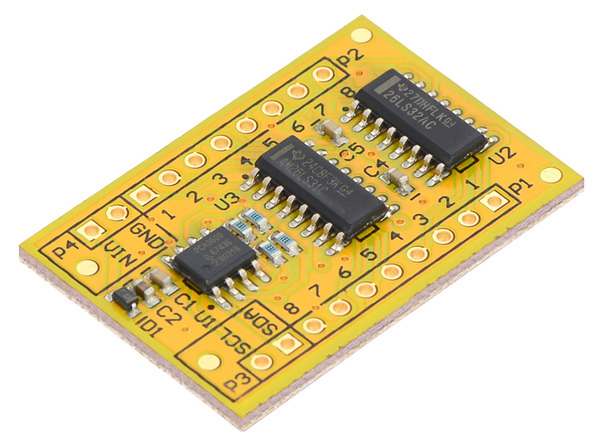 |
We’re now selling an I²C long distance differential extender from SJTbits. When you connect one of these boards to each I²C device in your system, they transparently convert all I²C communications to differential signaling and back, allowing the range of your I²C bus to be significantly increased (they have been tested at ranges of over a hundred feet).
For more information, see the I²C Long Distance Differential Extender product page.
